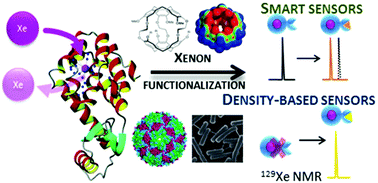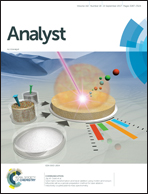129Xe NMR-based sensors: biological applications and recent methods
Abstract
Xenon is a first-rate sensor of biological events owing to its large polarizable electron cloud, which induces significant modifications to NMR parameters in response to slight changes in its local environment. The use of xenon as a sensor is of increasing interest for sensitive magnetic resonance imaging, because its signal can be enhanced by several orders of magnitude, mainly by spin-exchange optical pumping. Furthermore, xenon can be vectorized toward targets of interest by using functionalized host systems, which enables their detection at sub-nanomolar concentrations. In association with a new generation of detection methods, this gives rise to a powerful molecular imaging approach, whereby xenon can be delivered systematically several times after the introduction of a functionalized host system.



 Please wait while we load your content...
Please wait while we load your content...